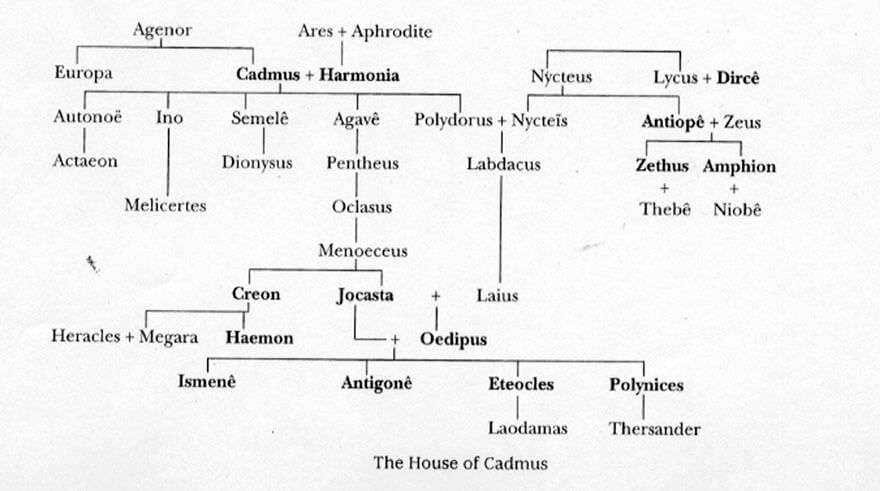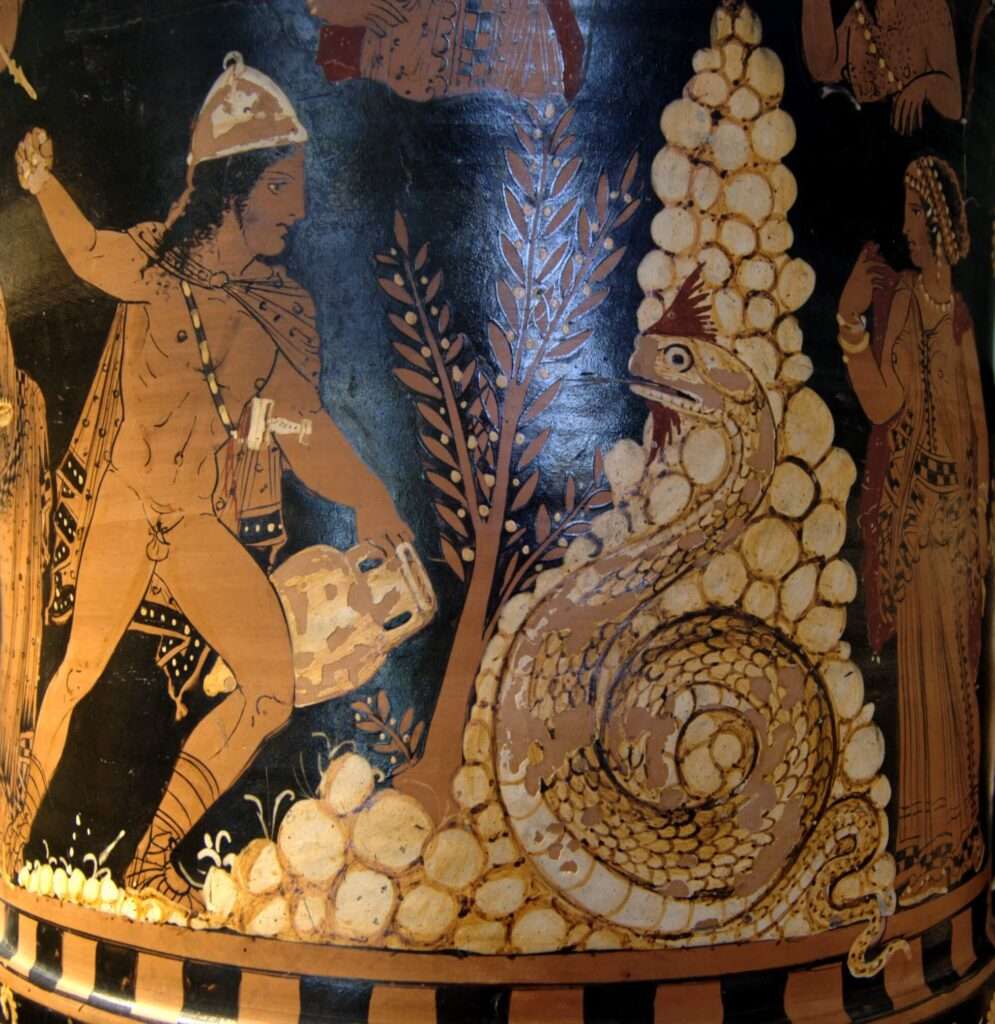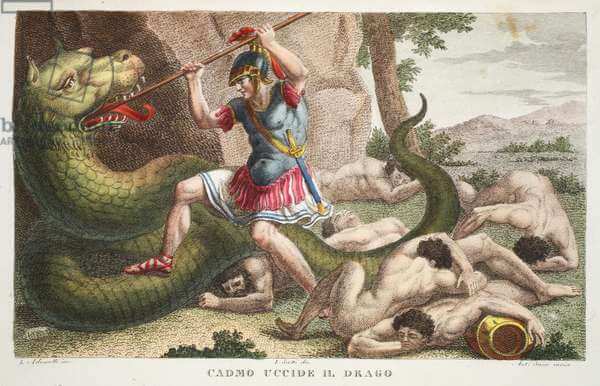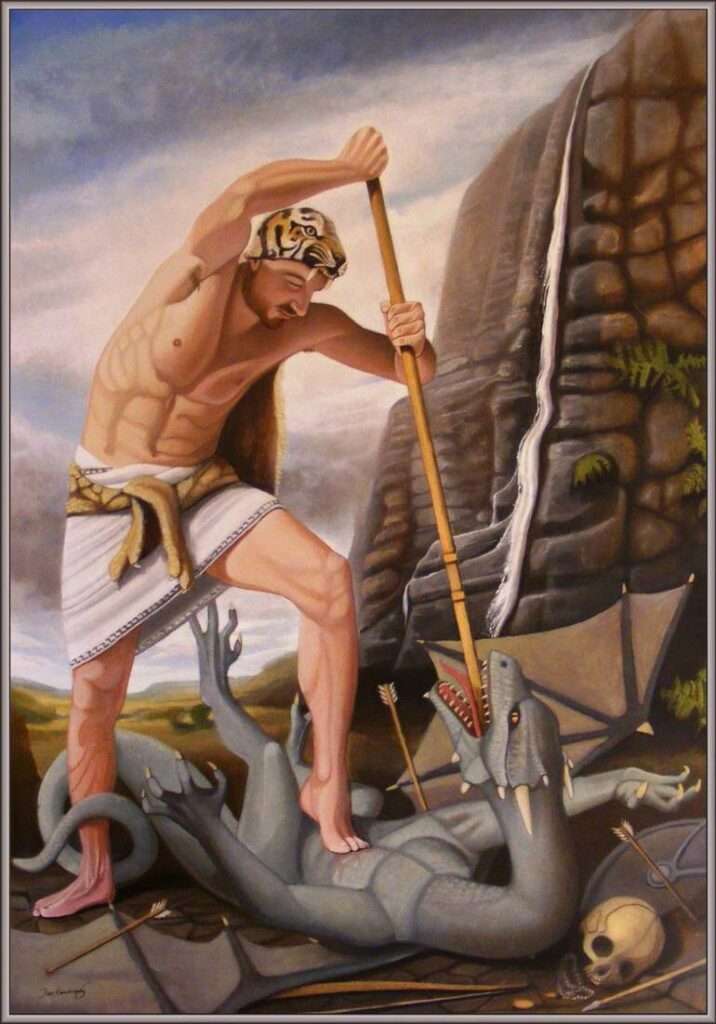Cadmus stands as a towering figure in Greek mythology, a symbol of might and wisdom, whose legacy far surpasses mere myth. As the reputed founder of Thebes and the introducer of the Phoenician alphabet to Greece, Cadmus’s story is a rich tapestry of adventure, conflict, and ingenuity. This article aims to not only recount the legendary exploits that etch his place in history but also to unravel the deeper cultural and societal impacts he had on ancient Greece and beyond. Readers will embark on a journey that weaves through the intricate layers of Cadmus’s life and contributions, armed with a narrative that promises original insights and a comprehensive analysis. With a keen focus on accuracy and scholarly research, this piece will offer a fresh perspective on the multifaceted demigod, ensuring that the tale of Cadmus is not just told but brought vividly to life.
| Origin | Greek Mythology |
|---|---|
| Classification | Hero/Founder |
| Family Members | Agenor (Father), Telephassa (Mother), Europa (Sister), Phoenix and Cilix (Brothers), Harmonia (Wife), Polydorus, Autonoë, Ino, Agave, and Semele (Children) |
| Region | Thebes, Greece |
| Associated with | Founding of Thebes, Sowing of dragon’s teeth, Introduction of Alphabet |
1. The Mythological Lineage of Cadmus
The Royal Phoenician Heritage
Cadmus was born into the purple regality of Phoenicia, a son of King Agenor and Queen Telephassa. His lineage is not merely a detail but the cornerstone of his legend. As a descendant of a royal house known for its wealth and seafaring prowess, Cadmus inherited a legacy of power and responsibility. This heritage is crucial to understanding his journey, for it was his royal duty that set him on the path to founding one of the greatest cities in Greek mythology.
Lineage and Its Power in Greek Myth
In Greek myths, lineage defines destiny. For Cadmus, it was the guiding star that led him to achievements that transcended the ordinary. His quest to find his sister Europa, abducted by Zeus, was as much about familial duty as it was about the assertion of his royal prerogative. Expert commentary on this aspect reveals how lineage shaped the roles and expectations of individuals in Greek stories. These bloodlines weren’t mere records of birth; they were prophecies of the roles these characters would play in the grand theater of myth. Cadmus’s story, brimming with encounters with gods and beasts, showcases the weight of ancestral legacy—a theme as relevant today as it was in the annals of ancient lore.

2. The Odyssey of Cadmus
In Search of Europa: A Brother’s Vow
The saga of Cadmus unfolds with a brother’s unwavering resolve to fulfill a seemingly impossible quest—to find his sister Europa, who was spirited away by the chief of gods, Zeus, disguised as a bull. This mission took Cadmus far from the shores of his homeland, across the Mediterranean, an odyssey that was as much a test of his character as it was a search. It’s a tale that not only highlights his dedication but also the interplay of human will against divine machinations in Greek mythology.

Founding Thebes: A New Dawn
The search for Europa ultimately led Cadmus to a different destiny: the founding of Thebes. Guided by the oracle of Delphi, he slayed a sacred dragon and, following the prophecy, sowed its teeth into the earth, from which sprang the Spartoi—warriors who would become the first citizens of Thebes. This act of creation was not just literal but also symbolic, marking the birth of a new cultural and civic era in Greece. Thebes would go on to be a central city-state, rivaling even Athens in its influence.
The Gift of the Alphabet: A Legacy of Letters
Cadmus’s journey also marked the introduction of the Phoenician alphabet to Greece, an intellectual boon that facilitated the recording of history, literature, and law. It’s a contribution that cannot be overstated; it was the bedrock upon which Greek education and literature were built, and it laid the foundations for Western literary traditions.
Unearthing Thebes
The story of Cadmus is bolstered by archaeological discoveries and scholarly research that provide a tangible connection to the myth. Excavations in the region of Thebes have unearthed remnants of a civilization that echo the grandeur described in ancient texts. These findings, alongside scholarly interpretations, offer a dual narrative of Cadmus: one rooted in the mythic past and one that resonates in the physical traces of history. The intertwining of Cadmus’s myth with archaeological evidence offers a compelling account that bridges the chasm between legend and historical reality.
3. The Dragon’s Defeat and the Spartoi’s Emergence
The Fateful Encounter with the Dragon
At the heart of Thebes’ founding myth is Cadmus’s fateful encounter with a formidable dragon, a guardian beast of the spring of Ares. The battle was fierce, showcasing Cadmus’s valor as he vanquished the creature—a deed that would set the stage for the city’s creation. This clash is more than a mere battle; it represents the triumph of human bravery and cunning over the chaotic forces of nature, a theme resonant throughout Greek mythology.

From Teeth to Warriors: The Spartoi’s Birth
In the aftermath of the dragon’s demise, Cadmus followed the advice of Athena to sow the dragon’s teeth into the earth, giving rise to the Spartoi—armed men sprung from the soil ready for battle. This act of sowing and reaping warriors is rich in metaphorical interpretation: it signifies the sowing of civilization itself and the cultivation of a new societal order from the remnants of untamed nature. The Spartoi, whose very name hints at their sown origins, were the ancestors of Theban nobility, entwining Cadmus’s lineage with the city’s future leaders.

4. Cadmus’s Enduring Influence
The Cultural Footprint of Cadmus
Cadmus’s legacy extends far beyond the establishment of Thebes. His influence permeates various facets of Greek culture, from the introduction of the alphabet, which revolutionized Greek communication and education, to his descendants, who would themselves become notable figures in Greek lore. Poets and playwrights have drawn inspiration from Cadmus’s story for centuries, and they consider his cultural contributions foundational to the development of Western civilization’s literature and language.
The Heroic Paradigm Set by Cadmus
The heroism of Cadmus set a standard in the pantheon of Greek heroes. His willingness to confront the unknown and his success in overcoming supernatural challenges became a template for heroism in Greek mythology. Cadmus’s deeds provided a mythic framework that shaped the narratives of heroes who followed, influencing their portrayal and the nature of the trials they faced. His life’s story serves as an archetypal journey, one that encapsulates the virtues and trials that define the Greek heroic narrative.
The Legacy of Theban Heroes
The lineage of Cadmus also includes a roster of mythological luminaries who inherited his heroic mantle and contributed to the saga of Thebes. Characters such as Oedipus, whose tragic story is interwoven with the city’s fate, and Dionysus, who was said to have been raised in Thebes, are part of the rich narrative tapestry initiated by Cadmus. These figures, each embodying different aspects of the hero’s journey, would not only shape Theban myths but also the broader narrative tradition of Greek mythology, underlining the lasting impact of Cadmus’s deeds.
The Theban Cycle: A Mythological Continuum
The Theban Cycle powerfully embodies Cadmus’s influence, detailing Thebes’s fortunes from its founding to its downfall, with his life and actions serving as the pivotal force. These stories underscore his vital role in the tapestry of Greek mythological history. This article section explores how Cadmus’s legacy intertwines with subsequent generations, creating a continuum that captures Greek mythology’s complexity and endurance.
5. The Iconography of Cadmus
Cadmus in the Artisan’s Eye
Ancient Greek art is replete with visual narratives, and depictions of Cadmus are no exception. His likeness and stories have been captured in a variety of mediums: from the black-figure pottery that showcases his epic battles to the marble sculptures that immortalize his heroic form. Each piece not only serves as a historical artifact but also as a window into how the ancient Greeks viewed Cadmus, revered him, and passed on his tale through generations.

Deciphering the Symbolism
The representation of Cadmus in art is laden with symbolism. For example, artists frequently depict the act of Cadmus slaying the dragon, symbolizing civilization’s triumph over chaos. Similarly, the illustrations of Cadmus sowing the dragon’s teeth highlight the themes of fate and destiny, and the emergence of new orders. These artworks were not mere decorations but visual teachings that communicated values and narratives to a populace for whom such images were integral to education and cultural identity.
Cultural Echoes in Artistic Form
The significance of these ancient depictions extends into the cultural and societal realms. By analyzing the portrayals of Cadmus across different artifacts, we can trace the evolution of his myth and its resonance in various epochs of Greek history. Each portrayal reflects the prevailing thoughts, values, and aspirations of the time, providing insight into how Cadmus’s story was interpreted and valued by the Greeks themselves.
6. Cadmus Through the Ages
Classical Echoes in Literature
Cadmus’s presence in classical literature is both profound and nuanced. Ancient texts, from Hesiod’s “Theogony” to Ovid’s “Metamorphoses,” offer a rich vein of material that presents Cadmus as a multi-dimensional figure: a hero, a king, and a mortal entwined with the divine. These literary works provide the bedrock for understanding his character and the lessons derived from his life and actions. They depict his journey not just as a series of events, but as a moral and cultural blueprint for ancient Greek society.
Cadmus Reimagined in Modern Media
In contemporary media, Cadmus has taken on new forms—reimagined in novels, films, and even comic books. These modern adaptations often play with the myth, sometimes staying faithful to the original tales, other times using the character of Cadmus as a springboard for new stories. This section will scrutinize how these reimaginings align with the classical depiction and what liberties they take in interpreting Cadmus’s character and his myth.
A Critical Examination of Portrayals
Each portrayal of Cadmus, whether on the page or screen, brings with it a particular perspective that can either reinforce or challenge the traditional narratives. This article will critically examine these various portrayals, assessing their historical accuracy, cultural impact, and the extent to which they honor the essence of the original myth. The aim is to understand how Cadmus’s story has been adapted over time and how these adaptations reflect the shifting cultural landscapes.
7. Conclusion
Cadmus stands as a paramount figure in Greek mythology, his story interlaced with the fabric of ancient Greek culture. His journey from mythic hero to a cultural icon is evident in art, literature, and media, highlighting his extraordinary influence. This article has dissected his narrative, providing a thorough exploration of his enduring impact. Reflecting on his significant contributions, from the founding of Thebes to the introduction of the alphabet, we deepen our grasp of Greek myths and their lasting effect on our culture. Unwavering, Cadmus’s legacy endures, a tribute to the enduring power of myth and collective memory.
